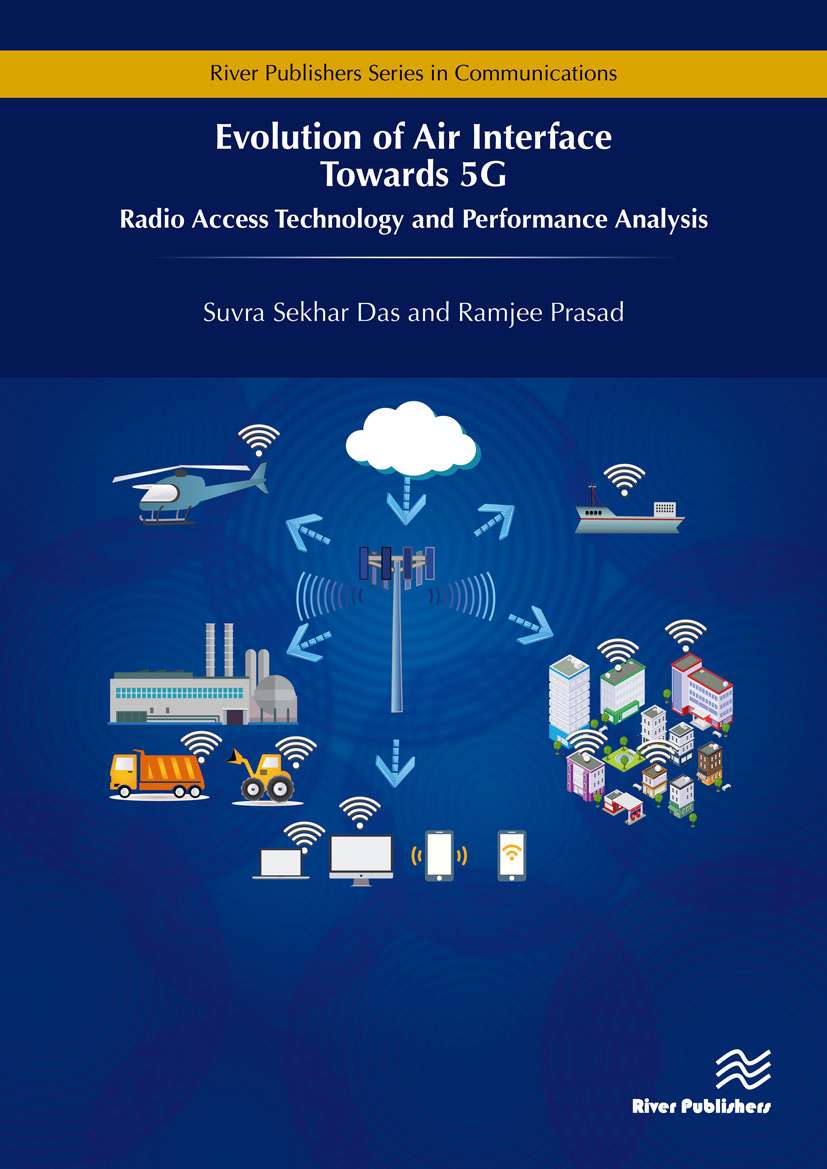River Publishers Series in Communications and Networking
Evolution of Air Interface Towards 5G
Radio Access Technology and Performance Analysis
Authors:
Suvra Sekhar Das, Indian Institute of Technology Kharagpur, India
Ramjee Prasad, CTIF Global Capsule, Aarhus University, Denmark
ISBN: 9788793609815 e-ISBN: 9788793609808
Available: August 2018
Over the past few decades, wireless access networks have evolved extensively to support the tremendous growth of consumer traffic. This superlative growth of data consumption has come about due to several reasons, such as evolution of the consumer devices, the types of telephone and smartphone being used, convergence of services, digitisation of economic transactions, tele-education, telemedicine, m-commerce, virtual reality office, social media, e-governance, e-security, to name but a few.
Not only has the society transformed to a digital world, but also the expectations from the services provided have increased many folds. The last mile/meters of delivery of all e-services is now required to be wireless. It has always been known that wireless links are the bottleneck to providing high data rates and high quality of service. Several wireless signalling and performance analysis techniques to overcome the hurdles of wireless channels have been developed over the last decade, and these are fuelling the evolution of 4G towards 5G. Evolution of Air Interface Towards 5G attempts to bring out some of the important developments that are contributing towards such growth.
Not only has the society transformed to a digital world, but also the expectations from the services provided have increased many folds. The last mile/meters of delivery of all e-services is now required to be wireless. It has always been known that wireless links are the bottleneck to providing high data rates and high quality of service. Several wireless signalling and performance analysis techniques to overcome the hurdles of wireless channels have been developed over the last decade, and these are fuelling the evolution of 4G towards 5G. Evolution of Air Interface Towards 5G attempts to bring out some of the important developments that are contributing towards such growth.
Heterogeneous networks, performance modelling and analysis, wireless cellular networks, 4G and 5G, performance analysis, QoS, Mimo, mmWave,
